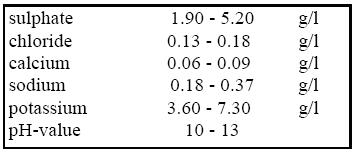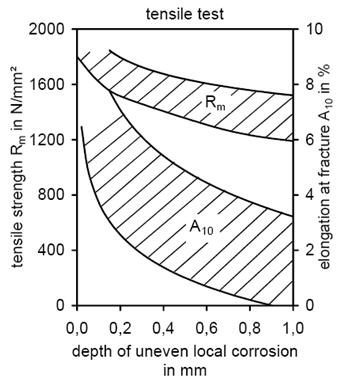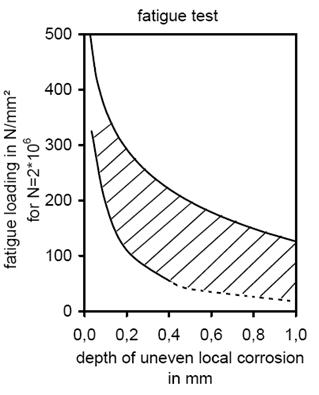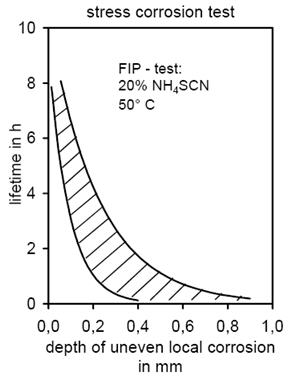Pre-Stressed Steel: Part Two
Abstract
Depending on the prevailing corrosion situation and the load conditions as well as the pre-stressing steel properties, the following possibilities of fracturing have to be distinguished: Brittle fracture due to exceeding the residual load capacity, Fracture as a result of stress corrosion cracking, Fracture as a result of fatigue and corrosion influences.
Fracture Mechanisms of Prestressing steels
The types of corrosion occurring at times as well as their specific manifestation must be regarded as an essential influencing factor on the behavior of the prestressing steels under unforeseen or inappropriate service conditions. The exclusive determination that corrosion was involved is not enough for a critical case study and for future damage prevention.
Depending on the prevailing corrosion situation and the load conditions as well as the prestressing steel properties, the following possibilities of fracturing have to be distinguished:
- Brittle fracture due to exceeding the residual load capacity; it is particularly promoted by local corrosion attack (pitting and wide pitting corrosion) and hydrogen embrittlement.
- Fracture as a result of stress corrosion cracking, where anodic stress corrosion cracking and hydrogen induced stress-corrosion cracking can be we distinguished.
- Fracture as a result of fatigue and corrosion influences, by mechanisms of corrosion fatigue cracking or fretting corrosion/fretting fatigue.
In the following paragraphs these mechanisms will be described in more detail, also with regard to prestressed concrete constructions.
Brittle Fracture
Brittle fracture may occur in high-strength steels after swift tensile stress. This is the case in prestressing steels when there is a fracture under loads until reaching the permissible pre-strain as a result of these influences:
- stress concentration in local notches (e.g. a wide corrosion pit)
- high stressing speed and low temperature
- an embrittlment of the steel structure after hydrogen adsorption (hydrogen embrittlment).
Influence of Corrosion
Mainly uniform general corrosion (e.g. after a prolonged weathering on a building site) does not have any major impact on the load bearing capacity. Not until, due to corrosion, an underrun of the required residual cross section has taken place; a prestressing steel fracture may then occur after exceeding the residual load bearing capacity. Such events may happen once prestressing steels in ungrouted tendon ducts are exposed over a long period of time to water and oxygen via untight anchorages or construction joints.
If, however, the prestressing steel incurs a local corrosion attack in the form of pitting or wide pitting corrosion, the load bearing capacity may get lost at early stages due to brittle fracture. The following effects are capable of triggering such attacks in prestressing steel:
The presence of aggressive water in the not yet injected ducts of post tensioning tendons which result from bleeding of the concrete during the erection of the construction. Already in the not-grouted and not-prestressed condition the steel may suffer from strong pitting or wide pitting corrosion and the load bearing capacity can be reduced considerably.
Bleeding is a separation of fresh concrete, where the solid content sinks down and the displaced water rises or penetrates in the inner hollows. In the bleeding water significantly high contents of sulfates and increased quantities of chloride may be accumulated (Table 1) by leaching of the construction materials cement, aggregates and water. High amounts of potassium-sulfates result from the gypsum in the cement.
The watery phase of fresh concrete penetrates into the ducts through the anchorages, couplings and defects in the sheet and accumulates at the deepest points. Because of an access of air, the alkaline water carbonates quickly. Bleeding water attack may within a few weeks lead to pitting depths of up to 1 mm.
Table 1: Analysis of bleeding water

The access of chloride containing waters, e.g. above untight anchorages or joints, in a non-grouted tendon duct may lead to damaging local corrosion attack in prestressing steel during the life time and after years of use. Comparable attack must be expected once chloride salts penetrate to the tendon through a concrete cover of inferior thickness and impermeability.
The performance characteristics of corroded prestressing steels can be determined in tensile, fatigue and stress corrosion tests (Figure 1). Such tests to establish the residual load bearing capacity will, for instance, be carried out while inspecting older buildings, after damaged prestressing steel samples had been drawn. This might help to gain the knowledge for necessary repair.
High strength prestressing steels show a far more sensitive reaction to corrosion attack than reinforcing steels, and this increasingly in the sequence (1) tensile test – (2) fatigue test – (3) stress corrosion test. In case of uneven local corrosion, a corrosion depth of 0.6 mm may suffice for breaking a cold deformed wire under tension of 70% of the specified tendon strength of about 1800 N/mm2 (see Figure 1, tensile test).
At pitting depth of above 0.2 mm cold drawn wires may show fatigue limits (fatigue limits for steels cycles of N= 2 106) of 100 N/mm2 and less (Figure 1, fatigue test). Like-new smooth surfaced steels normally show a fatigue limit of more than 400 N/mm2.
From all performance characteristics of prestressing steels, local corrosion attack has the most detrimental effect on the behaviour to hydrogen induced corrosion cracking. In a test developed by FIP standard (Fédération Internationale de la Précontrainte) the prestressing steel is immersed under tension into an ammonium thiocyanate solution. A minimum and average time of exposure before failure is specified. For cold drawn wire and strand these values are in the order of 1.5 respectively 5 hours. In this example, these life times are underrun at corrosion depths of >0.2 mm (Figure 1, stress corrosion test).



Figure 1: Properties of cold-deformed prestressing steel wires St 1570/1770 dS = 5 mm, in relation to depth of uneven local corrosion (According to Nürnberger research).
Read more
About Total Materia
Total Materia is the leading materials information platform, providing the most extensive information on metallic and non-metallic material properties and other material records.
All this information is available in Total Materia Horizon, the ultimate materials information and selection tool, providing unparalleled access to over 540,000 materials as well as, curated and updated reference data.
Total Materia Horizon includes:
- Comprehensive data on mechanical, physical properties
- >80 Global standards and their equivalencies
- Precision tools for comparison and analytics streamlining the selection process.
- Stress-strain, formability, fatigue, creep and fracture data
- Exports to over 25 CAx formats.
- Heat treatment, metallography, corrosion information
- Welding, brazing and adhesives data
- Monthly updated, traceable sources ensure reliability